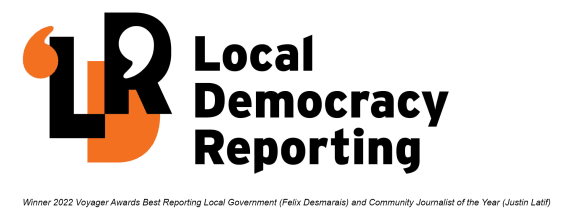
Who pays for road and woody debris clean-up? During the Gisborne District Council's Three Year Plan hearings last week, some residents believed forestry firms should pay increased rates for the work at Gisborne, while forestry companies were against proposed hikes. Photo: Supplied / NZME
Several Gisborne residents want forestry companies to pay higher rates to help clean up debris and fix roads.
However, some forestry companies say they are already paying a "disproportionately high rate" as some of their land is unusable for production.
In public submissions to Gisborne District Council's Three Year Plan, 39 percent of respondents blame forestry companies for potholes and woody debris, and 35 percent say they should "pay more".
The proposed rate rise for forestry owners is an average of $864 per year - a 7 percent increase, to $13,589 a year based on a valuation of $1.84m - and is aimed at cleaning up debris and fixing roads.

The district council received 173 formal submissions and last week held hearings over two days, where 41 people presented on a variety of issues.
Among the presentations were two from forestry companies questioning the proposed rate increases.
However, resident Barbara A Callender was among those who supported the increases.
"The owners of these pine forests are responsible for the insane amount of destruction to our area," she said in her written submission.
Another resident, Haz McClutchie, said: "Forestry companies need to be held accountable for the debris/slash left on the sides of hills and waterways."
Manu Caddie, of Te Weu Charitable Trust - a local organisation involved in climate change research projects - said in their submission: "Land with pine plantations should be retrospectively charged for clean-up costs in each catchment where pine trees are a significant proportion of woody debris."
Speaking with Local Democracy Reporting on Monday, Eastland Wood Council chairman Warren Rance said: "We would like to understand the methodology and the calculations and the maths behind the differential rating that's been given to forestry.
"For example, forestry pays more for roading and local roads than what a farmer does. And forestry now pays more for wood debris in the waterways and clean-ups than what farmers do.
"We'd just like to have a little bit more transparency around those calculations to understand that it has been fairly apportioned."
Roger Dickie NZ, which manages just under 9000 hectares of forestry production in Gisborne across 25 properties, submitted on behalf of multiple forestry companies.
Spokesman Will Dickie said their forestry owners did not support a forestry-targeted rate increase.
Dickie said that since 2019, the average rate per property increased by 61 percent from $7456 to $12,139.
"The majority of our forests are planted prior to 2019, and these forests don't receive income until harvesting occurs at age 28," he said.
"The already increased rate does not take into consideration the minimal use of roads in advance of any harvesting.
"During that period, forestry owners are already paying a disproportionately high rate compared to other heavy road users."
Dickie said their Hawke's Bay forests, which had similar composition and property size, paid $4583 on average and this was forecast to increase by an average of $1039 under newly proposed plans.
Every sector had people that were good and bad operators, and it was unfair that some forestry companies were being targeted on behalf of other companies' bad practices, he said.
"In the Gisborne region, we had no property that had any debris mobilised across the boundary," he said.
Peter Weir, the principal environmental adviser of Ernslaw One, a company that recently lost its Forest Stewardship Council accreditation, said it injected about $1 million into Gisborne's economy per week.
Of its land holdings, it managed 40,000 hectares of rateable land and half of the land was planted in radiata pine.
"We have around 13,000 hectares in native forest reserve, which we manage and pay rates on, but it's not part of our productive base yielding logs.
"On average, we pay around $16 a hectare ... and currently we are paying $591,000 per year to GDC (including land they tenure and pay rates on).
"With your rate increase, that goes up to $651,000."
He recognised the financial constraints of the council and as a company, Ernslaw relied on GDC's roading, he said.
The company also had about 2000 hectares of land designated by the council as Significant Natural Areas.
"Effectively this puts a 'do not disturb' sign on land," he said.
"We think it is unfair we pay a targeted rate for forestry on that land when that land will never generate any road demand."
Chayne Zinsli, of Summit Forests New Zealand Ltd, said it was concerned about the council's costs for fixing and maintaining local roads.
"The experience of the local forestry companies is that this can be done better and more cost-effectively," Zinsli's written submission said.
"We are willing to work with council to find mutually beneficial opportunities to address preventative maintenance."
According to a council report overviewing the community meetings for the Three Year Plan, forestry industry practices were a key concern for most communities.
"Residents advocate for stronger environmental regulations to mitigate the adverse effects of forestry activities and ensure sustainable land management practices."
LDR is local body journalism co-funded by RNZ and NZ On Air.






